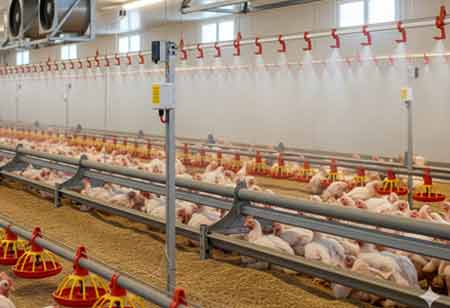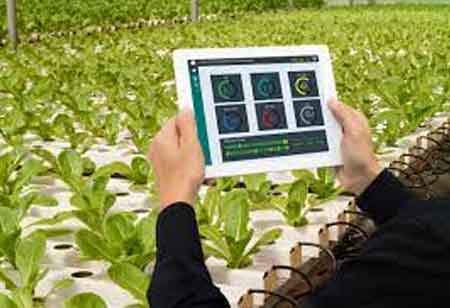Thank you for Subscribing to Agri Business Review Weekly Brief
Big Data and the Next Evolution of Agronomic Decision-Making
Big Data is remodelling agriculture, enabling predictive and prescriptive analytics for optimized resource use, increased yields, and sustainable practices through AI, IoT, and remote sensing.

By
Agri Business Review | Friday, July 25, 2025
Stay ahead of the industry with exclusive feature stories on the top companies, expert insights and the latest news delivered straight to your inbox. Subscribe today.
Fremont, CA: Agriculture, an industry as old as civilization itself, is undergoing a profound transformation driven by the exponential growth of data. "Big Data," characterized by its volume, velocity, variety, veracity, and value, is no longer a buzzword in the agricultural sector but a tangible force reshaping how farmers make decisions, optimize resources, and feed a growing global population.
The Data Deluge in Agriculture
Agriculture Big Data sources include precision agriculture technologies, remote sensing, IoT devices, weather data, farm management software, animal agriculture technologies, genomic and breeding data, and market and economic data. Precision agriculture technologies use GPS-enabled machinery, variable rate applicators, yield monitors, and soil sensors to generate granular data on planting rates, fertilizer application, irrigation, pest infestations, and crop yields. Remote sensing provides a bird's-eye view of fields, while IoT devices monitor environmental conditions in real-time. Weather data is crucial for predicting crop growth stages and optimizing planting and harvesting schedules. Farm management software integrates data from various sources, while animal agriculture technologies monitor animal health, behavior, location, and productivity.
The Next Evolution of Agronomic Decision-Making
Big Data is not just about collecting vast amounts of information, but also its analysis and insights that drive smarter agronomic decisions. Advanced algorithms can predict future outcomes like yield potential, disease outbreaks, pest infestations, and optimal harvest times. Prescriptive analytics provide specific recommendations on the best action to achieve desired outcomes. AI and ML algorithms are at the heart of advanced agronomic decision-making, enabling more accurate predictions, optimized resource allocation, and even autonomous decision-making in some areas. Digital twins, virtual representations of farms or specific fields, are gaining traction for simulating different scenarios and optimizing decisions. Big Data enables personalized and context-specific recommendations tailored to individual fields. Integrated decision support systems will empower farmers to access comprehensive insights and make holistic decisions. Autonomous farming is a critical enabler of big data.
The adoption of AI-powered farm management platforms, advancements in sensor technology and the growth of satellite imagery analytics are driving advancements in agriculture. These technologies offer automated disease detection, yield prediction, and optimized irrigation scheduling. Integrating blockchain technology with agricultural data improves food traceability and supply chain transparency. Big data monitors and maximizes farming practices, while digital twins are being developed for livestock. Edge computing is being used to address data transmission and latency in remote environments. Data marketplaces and sharing initiatives are emerging to facilitate secure and privacy-respecting agricultural data sharing among farmers, researchers, and service providers.
Big Data offers transformative opportunities in agriculture, including increased productivity, reduced input costs, improved resource management, enhanced environmental sustainability, greater resilience to climate change, improved food quality and safety, and enhanced profitability and competitiveness. Precision agriculture techniques minimize using fertilizers, pesticides, and water, while data-driven insights improve environmental sustainability and food quality.
Big Data is no longer a futuristic concept in agriculture; it is a present-day reality, fundamentally changing how food is produced. The next evolution of agronomic decision-making powered by advanced analytics, AI, and interconnected technologies, promises a future where farming is more precise, efficient, sustainable, and resilient. As technology advances and data become even more readily available, the agricultural sector is poised for a new era of data-driven innovation that will shape the future of food production for coming generations.





